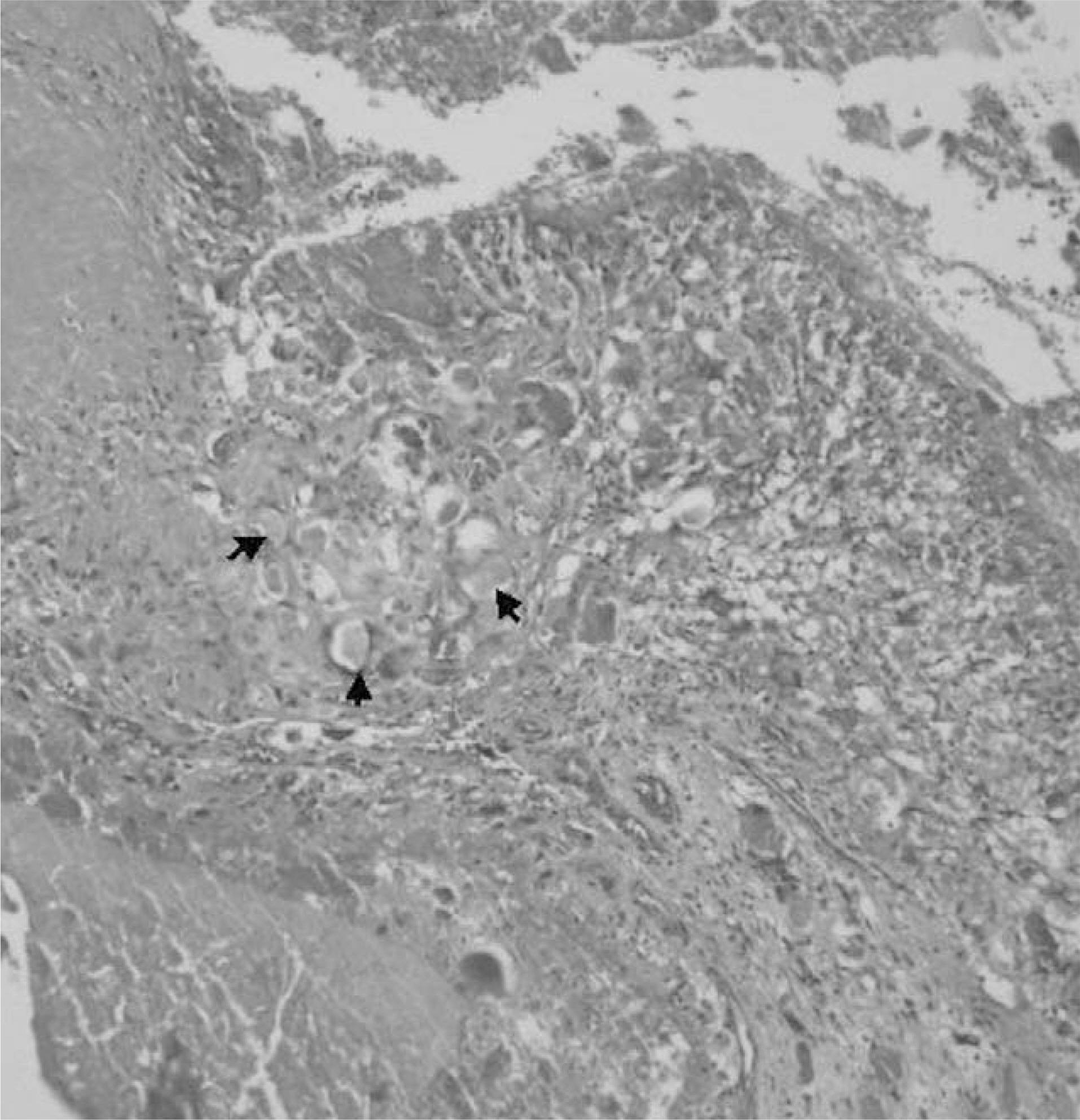J Korean Soc Spine Surg.
2007 Jun;14(2):96-100. 10.4184/jkss.2007.14.2.96.
Calcium Pyrophosphate Dihydrate Crystal Deposition Disease in the Cervical Ligamentum Flavum: A Case Report
- Affiliations
-
- 1Department of Orthopedic Surgery, Spine Center, Soonchunhyang University College of Medicine, Seoul, Korea. schsbj@hosp.sch.ac.kr
- KMID: 1941661
- DOI: http://doi.org/10.4184/jkss.2007.14.2.96
Abstract
- Calcium pyrophosphate dihydrate deposition disease (CPPD) is an inflammatory arthropathy that is defined by the deposition of CPPD crystals in articular and periarticular structures. The cervical ligamentum flavum is a rare location of CPPD deposition. A 65-year-old woman was admitted with complaints of neck pain and a tingling sensation and numbness below the xiphoid process for 2 months. Magnetic resonance (MR) imaging and computed tomography (CT) revealed compression of the spinal cord due to a nodular calcified mass in or attached to the ligamentum flavum at the C4-5, C5-6, or C6-7 level. The patient underwent a laminectomy at C4-5, C5-6, and C6-7, and resectioning of calcified extradural nodules that impinged on the cervical cord. The operation resulted in a resolution of neck pain and hypoesthesia, except in the feet. Histopathological examination of the excised specimen revealed rectangular CPPD crystals. Here, we report a case of compressive cervical spine due to CPPD deposition disease of the cervical spine and describe the literature relevant to CPPD deposition disease of the cervical spine.
Keyword
MeSH Terms
Figure
Reference
-
1). Ellman MH, Vazquez T, Ferguson L. Calcium pyrophosphate deposition in ligamentum flavum. Arthritis Rheum. 1978; 21:611–613.2). Fye KH, Weinstein PR, Donald F. Compressive cervical myelopathy calcium pyrophosphate dihydrate deposition disease: Report of a case and review of the literature. Arch Intern Med. 1999; 159:189–193.3). Joseph J, McGrath H. How to differentiate crystal-induced arthropathies. Geriatrics. 1995; 50:33–39.4). Muthukumar N, Karuppaswamy U, Sankarasubbu B. Calcium pyrophosphate dihydrate deposition disease causing thoracic cord compression. Neurosurg. 2000; 46:222–225.5). Kohn NN, Hughes RE, McCarty DJ, Faires JS. The significance of calcium pyrophosphate crystals in the syn-ovial fluid of arthritic patients, The “pseudogout syndrome”. Ann Intern Med. 1962; 56:738–745.6). Fam AG. Calcium pyrophosphate crystal deposition disease and other crystal deposition disease. Curr Opin Rheumatol. 1995; 7:364–368.7). Halverson PB. Calcium crystal-associated diseases. Curr Opin Rheumatol. 1996; 8:259–261.
Article8). Maigne JY, Ayral X, Guerin-Surville H. Frequency and size of ossifications in the caudal attachments of the ligamentum flavum of the thoracic spine. Surg Radiol Anat. 1992; 14:119–124.9). Sato R, Takahashi M, Yamashita Y, et al. .:. Calcium crystal deposition disease in cervical ligamentum flavum, CT and MRI findings. J Comput Assist Tomogr. 1992; 16:352–355.10). Sugimura H, Kakitsubata Y. MRI of ossification of the ligamentum flavum. J Comput Assist Tomogr. 1992; 16:73–76.11). Ivorra J, Rosas J, Pascual E. Most calcium pyrophosphate crystals appear as non-birefringent. Ann Rheum Dis. 1999; 58:582–584.
Article12). Pakasa NM, Kalengayi RM. Tumoral calcinosis: A clini-copathological study of 111 cases with emphasis on the earliest changes. Histopathol. 1997; 31:18–24.
Article
- Full Text Links
- Actions
-
Cited
- CITED
-
- Close
- Share
- Similar articles
-
- Calcium Pyrophosphate Dihydrate Crystal Deposition Disease Involving the Ligamentum Flavum of the Cervical Spine with Intense Enhancement on MRI: A Case Report
- A case of calcium pyrophosphate dihydrate deposition disease causing compressive cervical myelopathy
- A Case of CPPD Crystal Deposition Disease in a Patient with Rheumatoid Arthritis and Systemic Sclerosis
- A Case of Calcium Pyrophosphate Dihydrate Crystal Deposition Disease Associated with Gout
- Idiopathic Calcium Pyrophosphate Dihydrate (CPPD) Crystal Deposition Disease in a Young Female Patient : A Case Report





